Improved Metallic Enclosure Electromagnetic Imaging Using Ferrite Loaded Antennas
Abstract
1. Introduction
1.1. EMI as a Grain Permittivity Measurement Instrument
1.2. Paper Organization
2. Problem Definition and Imaging Algorithm
Inversion Algorithm
3. Antenna Design
3.1. Ferrite Media
3.2. Ferrite Loaded Antenna Simulation
3.3. Measurement
4. Experimental Description
4.1. Experimental Comparison of NFLA and FLA Antennas
4.2. Imaging Tests
4.2.1. Small Scaled Grain Bin Measurement Setup
4.2.2. Grain Description
4.2.3. Data Collection
5. Inversion Process
- Obtain : Using raw (the measurements without the wet grain target), estimate the background permittivity, through phaseless parametric inversion [36]. This algorithm outputs the grain height and cone angle, as well as an average permittivity. The background estimation algorithm uses the magnitude data and a gradient-free optimization to find the best average permittivity, grain height, and cone-angle.
- Generate Incident Fields: Using the inhomogeneous air/grain background permittivity, , as the input to a FEM forward solver, the incident magnetic field for the numerical model, called , is obtained.
- Calibrate Scattered Fields: We generate calibrated scattered fields from the incident magnetic fields, and the total/incident S-parameter measurements via the equation:where denote the transmitter and the receiver index.
6. Parametric Inversion Results
6.1. Correlation Coefficient
6.2. Height, Angle, and Background Permittivity Detection
7. Full 3D Imaging Results
Target Tracking
8. A Preliminary Experiment in 28 m (800 bu) Grain Bins
8.1. Large Bin Results
8.2. Large Bin Results Discussion
9. Discussion and Conclusions
Author Contributions
Funding
Acknowledgments
Conflicts of Interest
References
- Harrington, R. Time-Harmonic Electromagnetic Fields; Harrington RF: New York, NY, USA; Chichester, UK, 2001. [Google Scholar]
- Tajik, D.; Foroutan, F.; Shumakov, D.S.; Pitcher, A.D.; Nikolova, N.K. Real-Time Microwave Imaging of a Compressed Breast Phantom with Planar Scanning. IEEE J. Electromagn. RF Microwaves Med. Biol. 2018, 2, 154–162. [Google Scholar] [CrossRef]
- Golnabi, A.H.; Meaney, P.M.; Geimer, S.; Zhou, T.; Paulsen, K.D. Microwave tomography for bone imaging. In Proceedings of the 2011 IEEE International Symposium on Biomedical Imaging: From Nano to Macro, Chicago, IL, USA, 30 March–2 April 2011; pp. 956–959. [Google Scholar] [CrossRef]
- Garrett, D.C.; Fear, E.C. Feasibility Study of Hydration Monitoring Using Microwaves—Part 1: A Model of Microwave Property Changes with Dehydration. IEEE J. Electromagn. RF Microwaves Med. Biol. 2019, 3, 292–299. [Google Scholar] [CrossRef]
- Li, F.; Chen, X.; Huang, K.M. Microwave imaging a buried object by the GA and using the S11 parameter. Prog. Electromagn. Res. 2008, 85, 289–302. [Google Scholar] [CrossRef][Green Version]
- Tobon Vasquez, J.A.; Scapaticci, R.; Turvani, G.; Ricci, M.; Farina, L.; Litman, A.; Casu, M.R.; Crocco, L.; Vipiana, F. Noninvasive Inline Food Inspection via Microwave Imaging Technology: An Application Example in the Food Industry. IEEE Antennas Propag. Mag. 2020, 62, 18–32. [Google Scholar] [CrossRef]
- Mohammed, B.J.; Abbosh, A.M.; Mustafa, S.; Ireland, D. Microwave System for Head Imaging. IEEE Trans. Instrum. Meas. 2014, 63, 117–123. [Google Scholar] [CrossRef]
- Ireland, D.; Bialkowski, M. Microwave Head Imaging for Stroke Detection. Prog. Electromagn. Res. M 2011, 21, 163–175. [Google Scholar] [CrossRef]
- Li, B.; Liu, H.; Zhang, Z.; Gao, X. A Rapid Microwave Imaging Approach for the Diagnosis of Traumatic Brain Injury. Prog. Electromagn. Res. M 2021, 104, 71–80. [Google Scholar] [CrossRef]
- Tournier, P.H.; Hecht, F.; Nataf, F.; Bonazzoli, M.; Rapetti, F.; Dolean, V.; Semenov, S.; El Kanfoud, I.; Aliferis, I.; Migliaccio, C.; et al. Microwave tomography for brain stroke imaging. In Proceedings of the 2017 IEEE International Symposium on Antennas and Propagation & USNC/URSI National Radio Science Meeting, San Diego, CA, USA, 9–14 July 2017; pp. 29–30. [Google Scholar]
- Golnabi, A.H.; Meaney, P.M.; Geimer, S.D.; Paulsen, K.D. 3-D microwave tomography using the soft prior regularization technique: Evaluation in anatomically realistic MRI-derived numerical breast phantoms. IEEE Trans. Biomed. Eng. 2019, 66, 2566–2575. [Google Scholar] [CrossRef]
- Asefi, M.; Baran, A.; LoVetri, J. An experimental phantom study for air-based quasi-resonant microwave breast imaging. IEEE Trans. Microw. Theory Tech. 2019, 67, 3946–3954. [Google Scholar] [CrossRef]
- Nikolova, N.K. Microwave Imaging for Breast Cancer. IEEE Microw. Mag. 2011, 12, 78–94. [Google Scholar] [CrossRef]
- Fear, E.; Meaney, P.; Stuchly, M. Microwaves for breast cancer detection? IEEE Potentials 2003, 22, 12–18. [Google Scholar] [CrossRef]
- Bindu, G.; Anil, L.; Vinu, T.; Aanandan, C.K.; Mathew, K.T. Active Microwave Imaging for Breast Cancer Detection. Prog. Electromagn. Res. 2005, 58, 149–169. [Google Scholar] [CrossRef]
- Lai, J.C.Y.; Soh, C.B.; Gunawan, E.; Low, K.S. UWB Microwave Imaging for Breast Cancer Detection—Experiments with Heterogeneous Breast Phantoms. Prog. Electromagn. Res. 2011, 16, 19–29. [Google Scholar] [CrossRef]
- Chong, J.; Lai, Y.; Soh, C.B.; Gunawan, E.; Low, K.S. Homogeneous and Heterogeneous Breast Phantoms for Ultra-Wideband Microwave Imaging Applications. Prog. Electromagn. Res. 2010, 100, 397–4159. [Google Scholar]
- Edwards, K.; LoVetri, J.; Gilmore, C.; Jeffrey, I. Machine-Learning-Enabled Recovery of Prior Information from Experimental Breast Microwave Imaging Data; American Society of Agricultural and Biological Engineers: St. Joseph, MI, USA, 2022; Volume 175, pp. 1–11. [Google Scholar]
- Asefi, M.; Zakaria, A.; LoVetri, J. Microwave imaging using normal electric-field components inside metallic resonant chambers. IEEE Trans. Microw. Theory Tech. 2016, 65, 923–933. [Google Scholar] [CrossRef]
- Asefi, M.; Faucher, G.; LoVetri, J. Surface-current measurements as data for electromagnetic imaging within metallic enclosures. IEEE Trans. Microw. Theory Tech. 2016, 64, 4039–4047. [Google Scholar] [CrossRef]
- Gilmore, C.; Asefi, M.; Nemez, K.; Paliwal, J.; LoVetri, J. Three dimensional radio-frequency electromagnetic imaging of an in-bin grain conditioning process. Comput. Electron. Agric. 2019, 167, 105059. [Google Scholar] [CrossRef]
- Gilmore, C.; Asefi, M.; Paliwal, J.; LoVetri, J. Industrial scale electromagnetic grain bin monitoring. Comput. Electron. Agric. 2017, 136, 210–220. [Google Scholar] [CrossRef]
- Nelson, S.O.; Trabelsi, S. Historical development of grain moisture measurement and other food quality sensing through electrical properties. IEEE Instrum. Meas. Mag. 2016, 19, 16–23. [Google Scholar] [CrossRef]
- Zakaria, A.; Jeffrey, I.; LoVetri, J. Full-vectorial parallel finite-element contrast source inversion method. Prog. Electromagn. Res. 2013, 142, 463–483. [Google Scholar] [CrossRef]
- Van Den Berg, P.M.; Kleinman, R.E. A contrast source inversion method. Inverse Probl. 1997, 13, 1607. [Google Scholar] [CrossRef]
- Lewis, M.A.; Trabelsi, S.; Nelson, S.O. Development of an eighth-scale grain drying system with real-time microwave monitoring of moisture content. Appl. Eng. Agric. 2019, 35, 767–774. [Google Scholar] [CrossRef]
- Mohadi, C.T.; Asefi, M.; Gilmore, C. Ferrite Loaded Shielded Half Loop Antenna for Electromagnetic Imaging inside Metallic Chambers. In Proceedings of the 2021 IEEE 19th International Symposium on Antenna Technology and Applied Electromagnetics (ANTEM), Winnipeg, MB, Canada, 8–11 August 2021; pp. 1–2. [Google Scholar]
- Trabelsi, S.; Nelson, S.O. Microwave moisture meter for granular and particulate materials. In Proceedings of the 2010 IEEE Instrumentation Measurement Technology Conference Proceedings, Austin, TX, USA, 3–6 May 2010; pp. 1304–1308. [Google Scholar] [CrossRef]
- Nelson, S.; Kraszewski, A.; Trabelsi, S.; Lawrence, K. Using cereal grain permittivity for sensing moisture content. IEEE Trans. Instrum. Meas. 2000, 49, 470–475. [Google Scholar] [CrossRef]
- King, R.; King, K. Microwave moisture measurement of grains. In Proceedings of the IEEE Instrumentation and Measurement Technology Conference, Atlanta, GA, USA, 14–16 May 1991; pp. 506–512. [Google Scholar] [CrossRef]
- Trabelsi, S.; Nelson, S.O. Free-space measurement of dielectric properties of cereal grain and oilseed at microwave frequencies. Meas. Sci. Technol. 2003, 14, 589–600. [Google Scholar] [CrossRef]
- King, R.J.; King, K.; Woo, K. Microwave moisture measurement of grains. IEEE Trans. Instrum. Meas. 1992, 41, 111–115. [Google Scholar] [CrossRef]
- Nelson, S.O. Measurement and applications of dielectric properties of agricultural products. IEEE Trans. Instrum. Meas. 1992, 41, 116–122. [Google Scholar] [CrossRef]
- Kandala, C.V.; Butts, C.L.; Nelson, S.O. Capacitance sensor for nondestructive measurement of moisture content in nuts and grain. IEEE Trans. Instrum. Meas. 2007, 56, 1809–1813. [Google Scholar] [CrossRef]
- Nelson, S.O.; Trabelsi, S. A Century of Grain and Seed Moisture Sensing through Electrical Properties; American Society of Agricultural and Biological Engineers: St. Joseph, MI, USA, 2011; p. 1. [Google Scholar]
- Gilmore, C.; Jeffrey, I.; Asefi, M.; Geddert, N.T.; Brown, K.G.; Lovetri, J. Phaseless parametric inversion for system calibration and obtaining prior information. IEEE Access 2019, 7, 128735–128745. [Google Scholar] [CrossRef]
- Vittoria, C. Magnetics, Dielectrics, and Wave Propagation with MATLAB® Codes; CRC Press: Boca Raton, FL, USA, 2011. [Google Scholar]
- Xu, J.; Koledintseva, M.Y.; Zhang, Y.; He, Y.; Matlin, B.; DuBroff, R.E.; Drewniak, J.L.; Zhang, J. Complex permittivity and permeability measurements and finite-difference time-domain simulation of ferrite materials. IEEE Trans. Electromagn. Compat. 2010, 52, 878–887. [Google Scholar] [CrossRef]
- Patel, R.H.; Desai, A.; Upadhyaya, T. A discussion on electrically small antenna property. Microw. Opt. Technol. Lett. 2015, 57, 2386–2388. [Google Scholar] [CrossRef]
- Lawrence, K.; Nelson, S.; Bartley, P., Jr. Measuring dielectric properties of hard redwinter wheat from 1 to 350 MHZ with a flow-through coaxial sample holder. Trans. ASAE 1998, 41, 143. [Google Scholar] [CrossRef]
- Karunakaran, C.; Muir, W.; Jayas, D.; White, N.; Abramson, D. Safe storage time of high moisture wheat. J. Stored Prod. Res. 2001, 37, 303–312. [Google Scholar] [CrossRef]
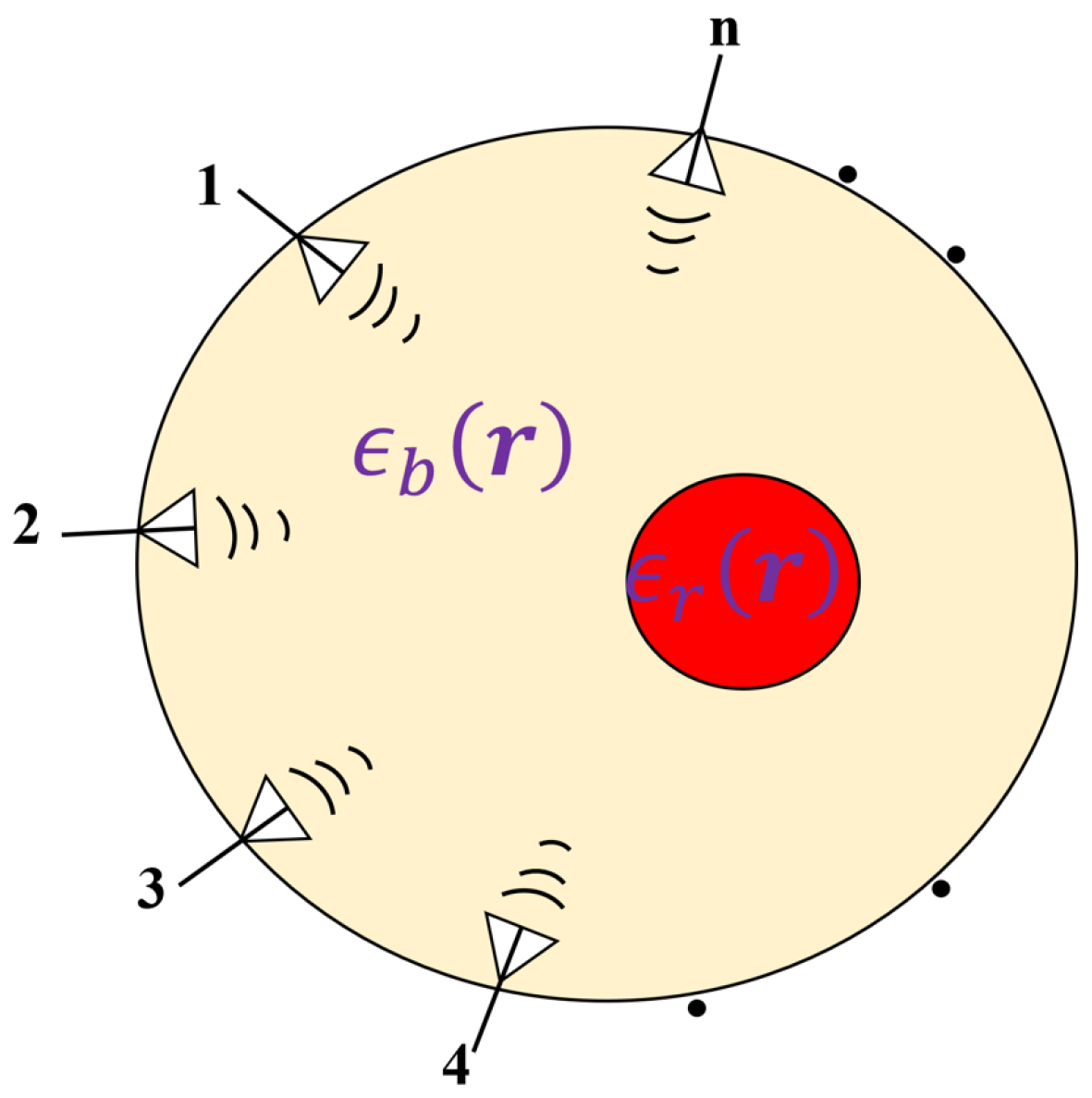
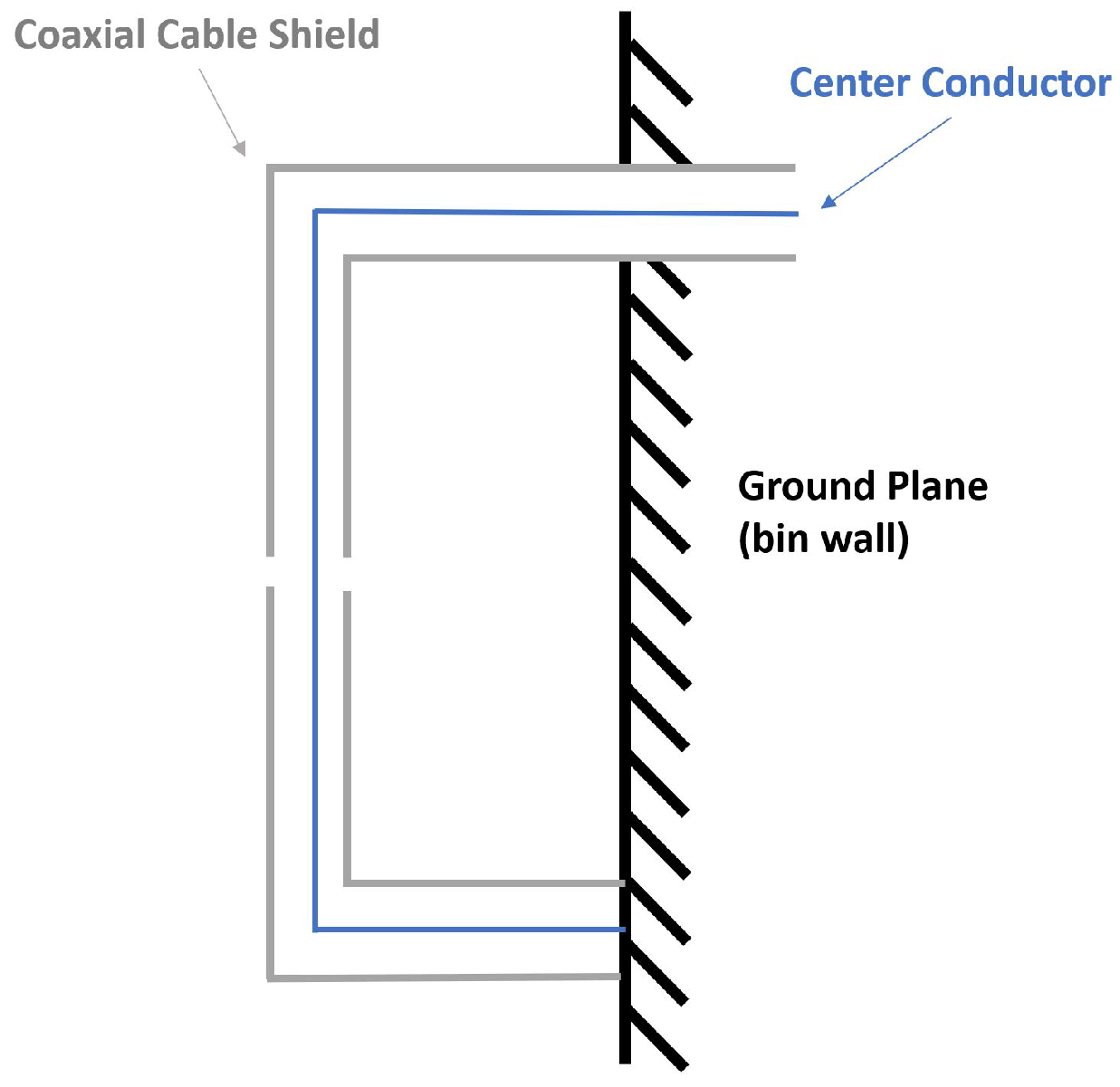




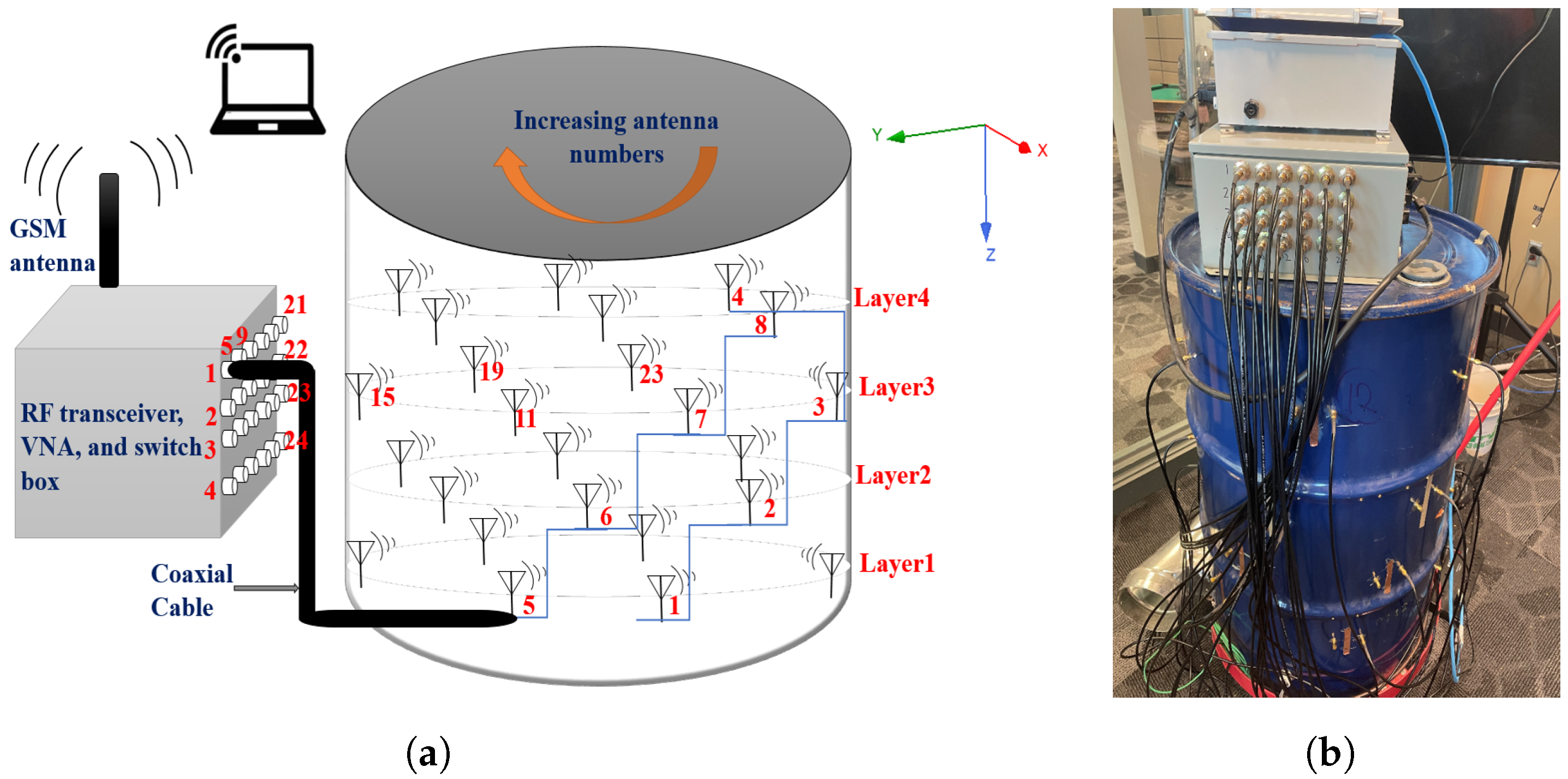

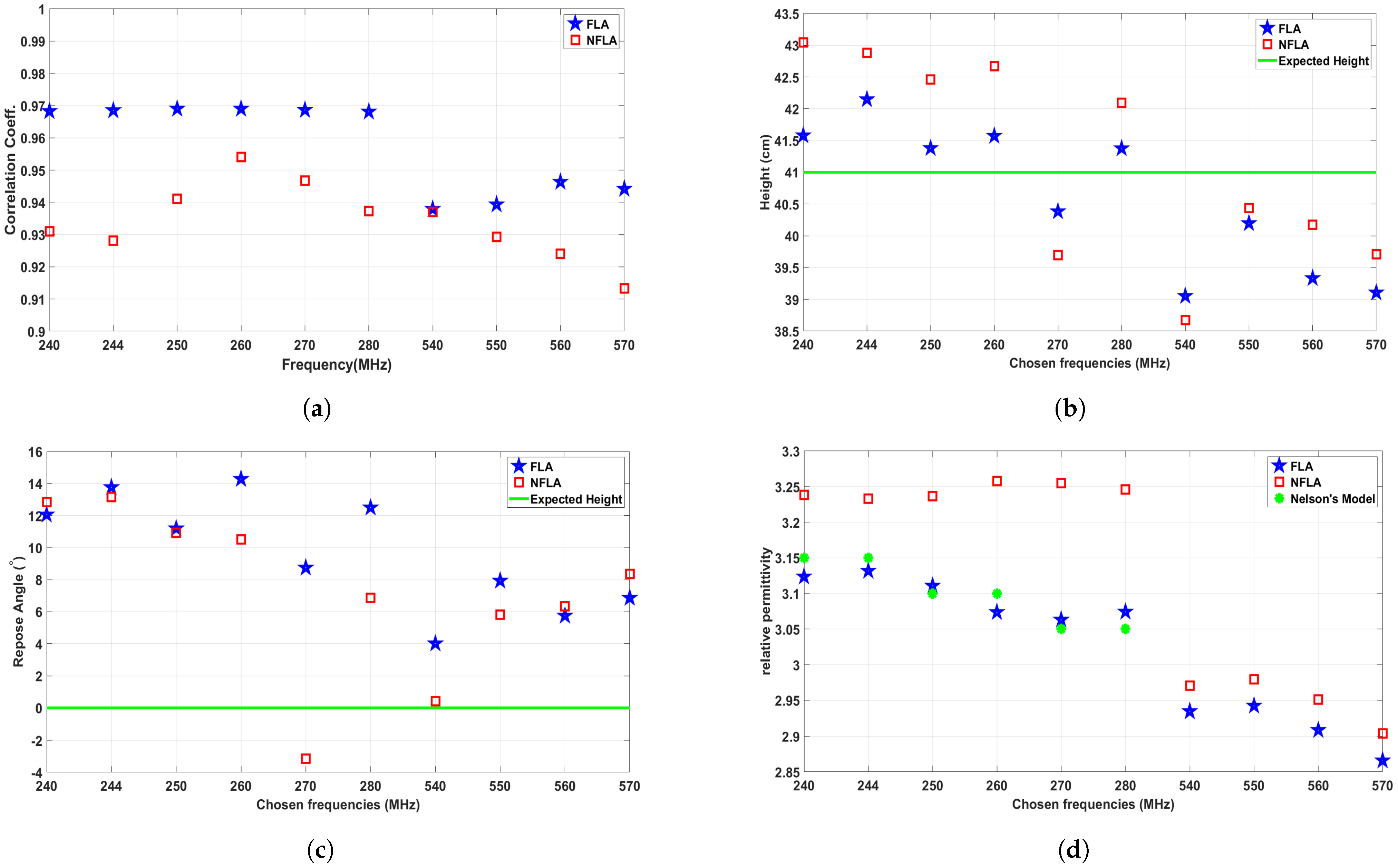



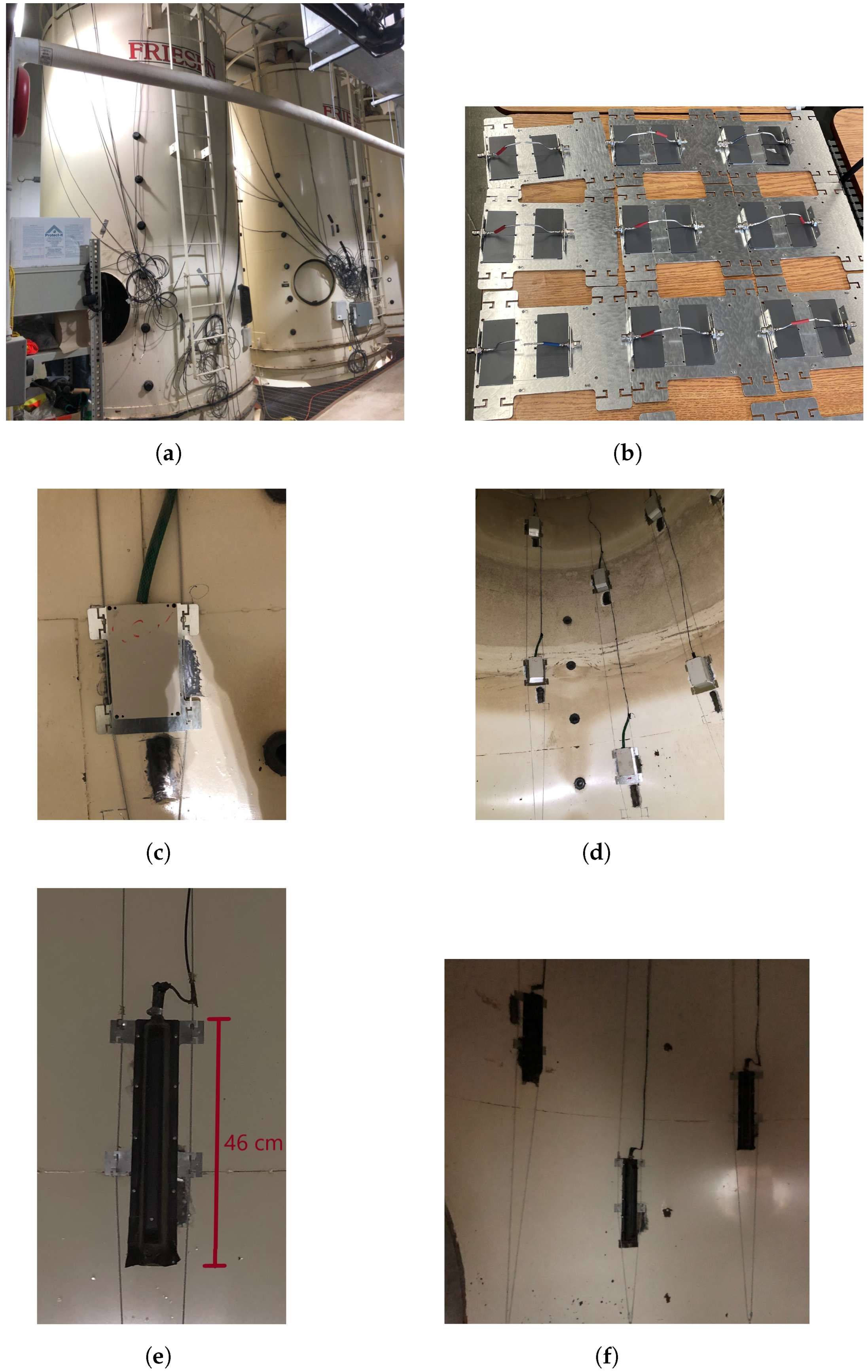

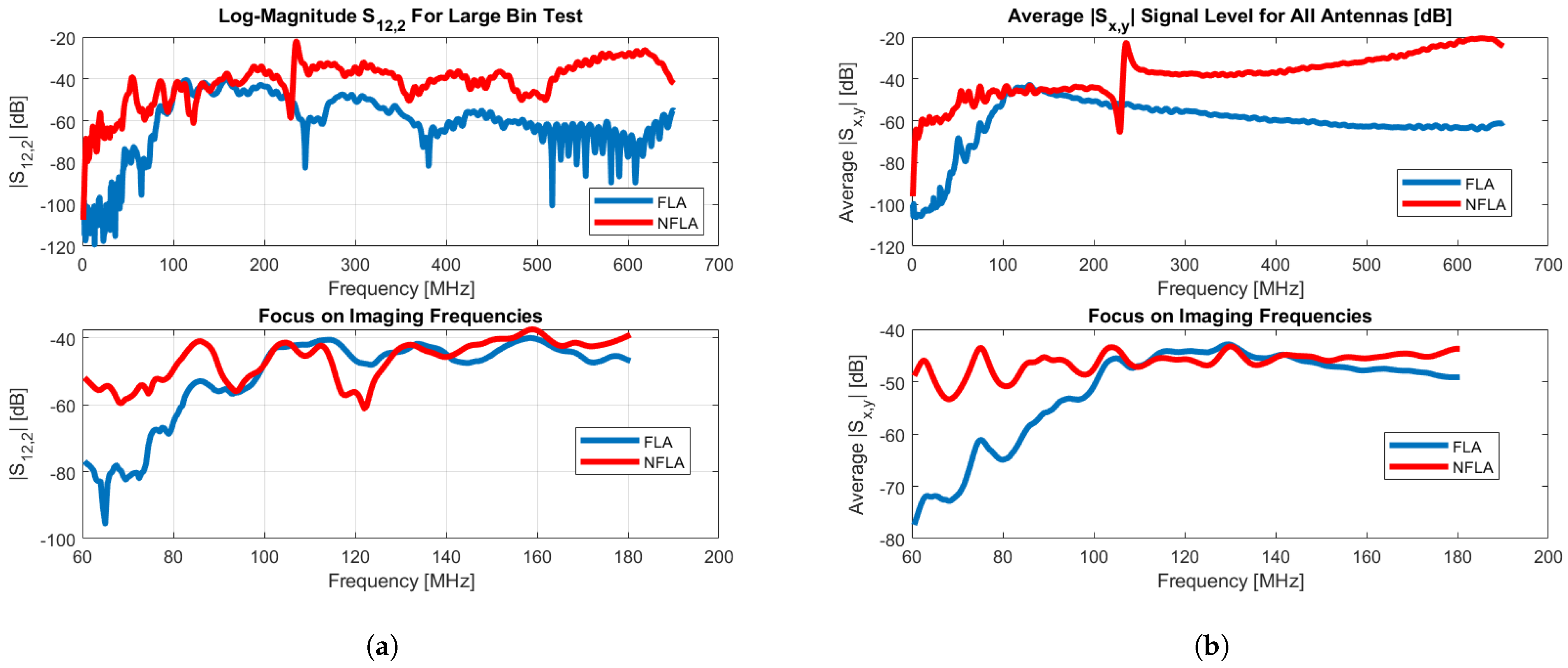
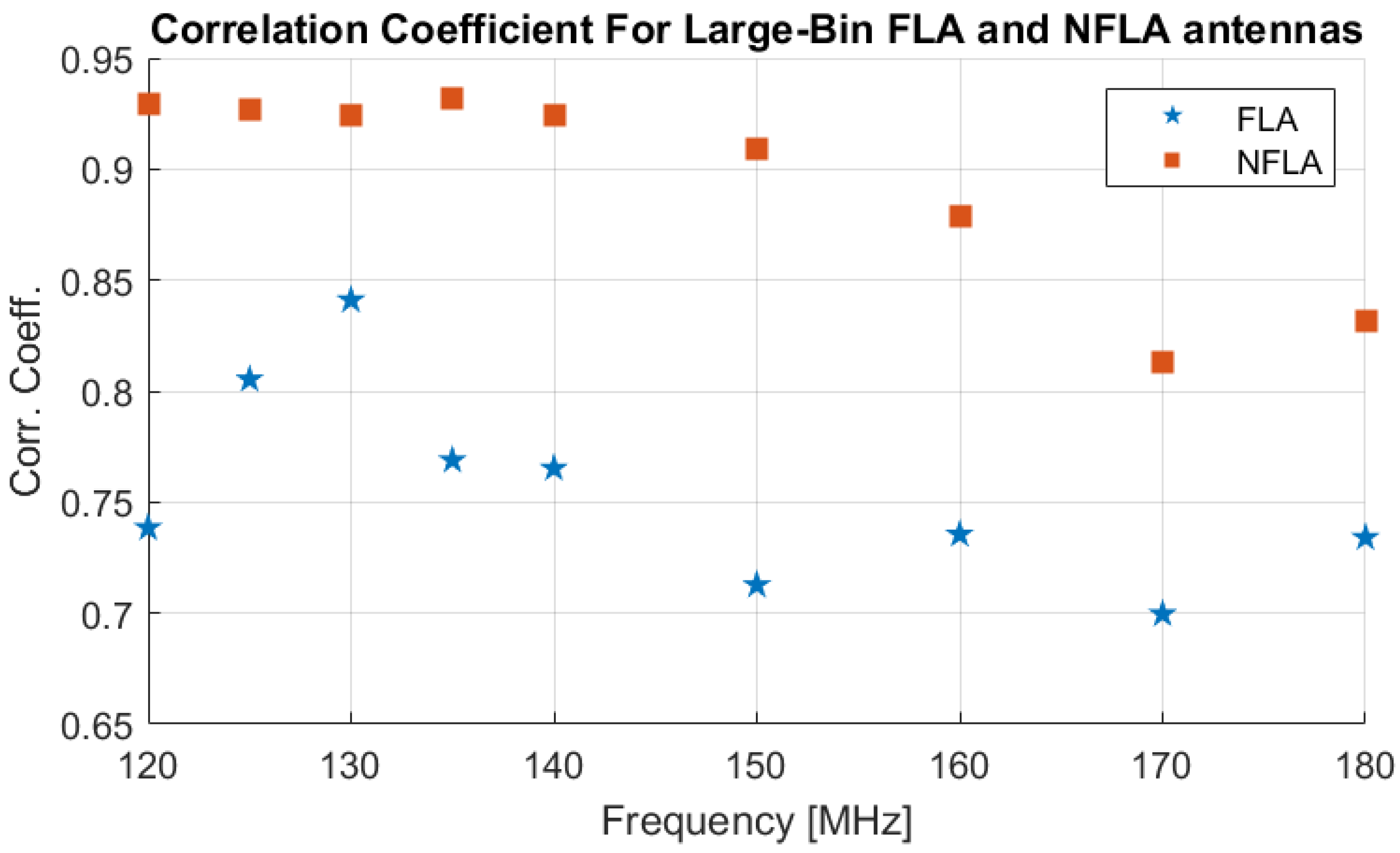
| Parameter | Value | Parameter | Value |
|---|---|---|---|
| 1 | |||
| - | |||
| (s) | (s) | ||
| (s) | (s) | ||
| (s) | - | (s) | |
| (s/m) | (s/m) | 0 |
| - | 260 MHz | 570 MHz |
|---|---|---|
| cm | 12.5 | 11 |
| 67 | 47 | |
| cm | 10 | 12.5 |
| 9 | 14 | |
| cm | 20 | 27.5 |
| 4 | 31 | |
| cm | −1 | 0 |
| cm | −14 | −14 |
| cm | −58 | −57 |
| - | 260 MHz | 570 MHz |
|---|---|---|
| cm | 27 | 11 |
| 260 | 47 | |
| cm | 16 | 12 |
| 45 | 9 | |
| cm | 35 | 16 |
| 67 | 24 | |
| cm | 0 | 0 |
| cm | −18 | −13 |
| cm | −60 | −56 |
Publisher’s Note: MDPI stays neutral with regard to jurisdictional claims in published maps and institutional affiliations. |
© 2022 by the authors. Licensee MDPI, Basel, Switzerland. This article is an open access article distributed under the terms and conditions of the Creative Commons Attribution (CC BY) license (https://creativecommons.org/licenses/by/4.0/).
Share and Cite
Mohamadi, C.T.; Asefi, M.; Thakur, S.; Paliwal, J.; Gilmore, C. Improved Metallic Enclosure Electromagnetic Imaging Using Ferrite Loaded Antennas. Electronics 2022, 11, 3804. https://doi.org/10.3390/electronics11223804
Mohamadi CT, Asefi M, Thakur S, Paliwal J, Gilmore C. Improved Metallic Enclosure Electromagnetic Imaging Using Ferrite Loaded Antennas. Electronics. 2022; 11(22):3804. https://doi.org/10.3390/electronics11223804
Chicago/Turabian StyleMohamadi, Cena T., Mohammad Asefi, Sandeep Thakur, Jitendra Paliwal, and Colin Gilmore. 2022. "Improved Metallic Enclosure Electromagnetic Imaging Using Ferrite Loaded Antennas" Electronics 11, no. 22: 3804. https://doi.org/10.3390/electronics11223804
APA StyleMohamadi, C. T., Asefi, M., Thakur, S., Paliwal, J., & Gilmore, C. (2022). Improved Metallic Enclosure Electromagnetic Imaging Using Ferrite Loaded Antennas. Electronics, 11(22), 3804. https://doi.org/10.3390/electronics11223804







